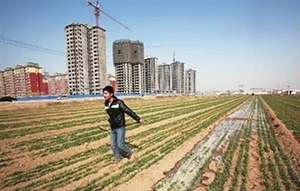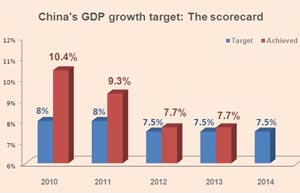According to the urbanization plan, by 2020, all cities having more than 200,000 residents will be linked by standard rail, and high-speed services will connect cities with more than 500,000 residents.
Meanwhile, a population influx from rural to urban areas will necessitate huge social spending. China aims to lift its urbanization ratio from the current 53.7 percent to 60 percent, which means at least 100 million people will
According to an earlier Chinese Academy of Social Sciences report, the average cost for each rural resident to move will come to about 130,000 yuan ($21,480), of which 26,000 yuan will be provided by the government.
The government will innovate the fiscal system to incentivize local governments to integrate the migrants.
Liu said the government has already upgraded its fiscal transfer payment system, taking into consideration a city's migrant population when deciding how much to allocate to locals.
Fiscal transfer payments are crucial for local governments as the money makes up a bulk of their annual revenue, in some cases more than 90 percent.
Under previous arrangements, local governments had little incentive to integrate migrant workers as the central government only counts hukou (household registration) holders when making decisions.
Liu said the government is actively implementing a plan, laid out after the Third Plenum of the 18th Central Committee of the Communist Party of China, that will link the transfer payment with the number of migrant workers a city absorbs: The more a city turns them into full citizens, the more money it can get from Beijing.
Jonathan Woetzel, co-chair of the Urban China Initiative and director of McKinsey & Co, said that the urbanization drive should pay special attention to small inland cities as they lack financial capability to implement the massive program.
"People are voting with their feet. The big cities are OK because people flow there, and they have sufficient revenue. But smaller cities are not that attractive. China has to make sure its urbanization is harmonious so no cities fall behind," he said.
Liu Zhi, director of the Center for Urban Development and Land Policy at Peking University, said now is a good opportunity for PPP to catch up in China, helping to address financial gaps.
"In many developing countries, funding from PPP exceeds government input in terms of infrastructure investment. In China, government input accounted for more than 90 percent of infrastructure financing," he said.
 Urbanization should be for people's sake |
 |
